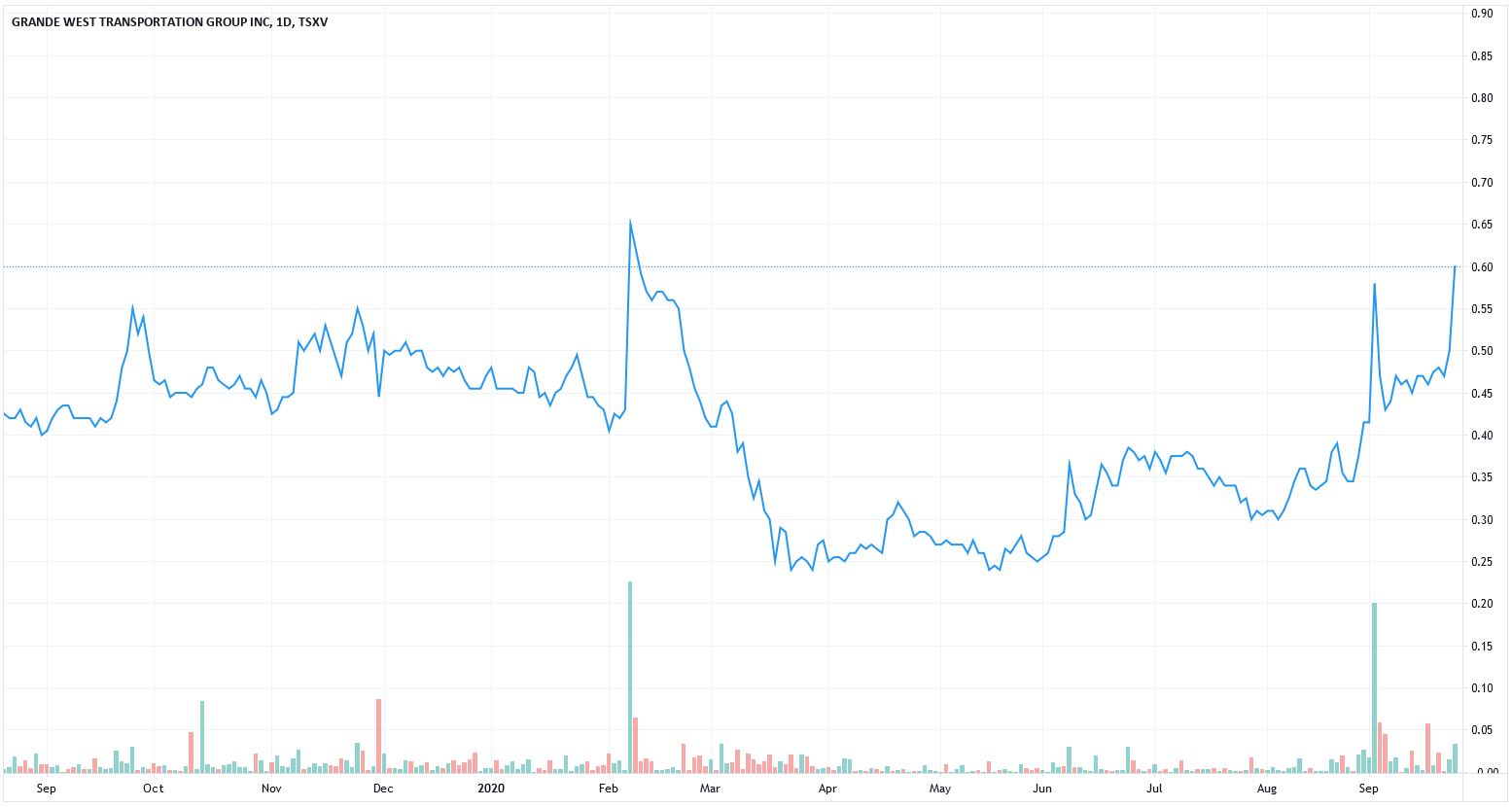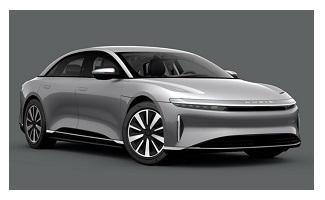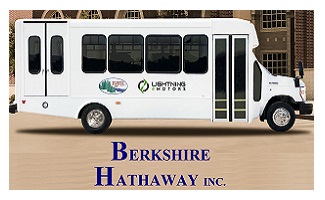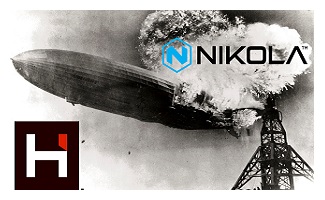 eResearch: Grande West Transportation Group Inc. (TSX-V: BUS; OTC: GWTNF), based in Aldergrove, BC, manufactures mid-sized, multi-purpose transit vehicles. The Company designs, engineers, and sells buses to public and commercial enterprises, and earns additional revenues (mostly recurring) by selling aftermarket parts.
eResearch: Grande West Transportation Group Inc. (TSX-V: BUS; OTC: GWTNF), based in Aldergrove, BC, manufactures mid-sized, multi-purpose transit vehicles. The Company designs, engineers, and sells buses to public and commercial enterprises, and earns additional revenues (mostly recurring) by selling aftermarket parts.
Grande West’s unique business model allows it to operate as a contract manufacturer, leveraging its proprietary designs and intellectual property (“IP”) and partnering with other world-class global manufacturers to build its trademark product, a mid-size bus called the Vicinity. The Vicinity offers distinct competitive advantages such as lower fuel costs, lower capital costs, and lower operating costs when compared to standard larger-sized models.
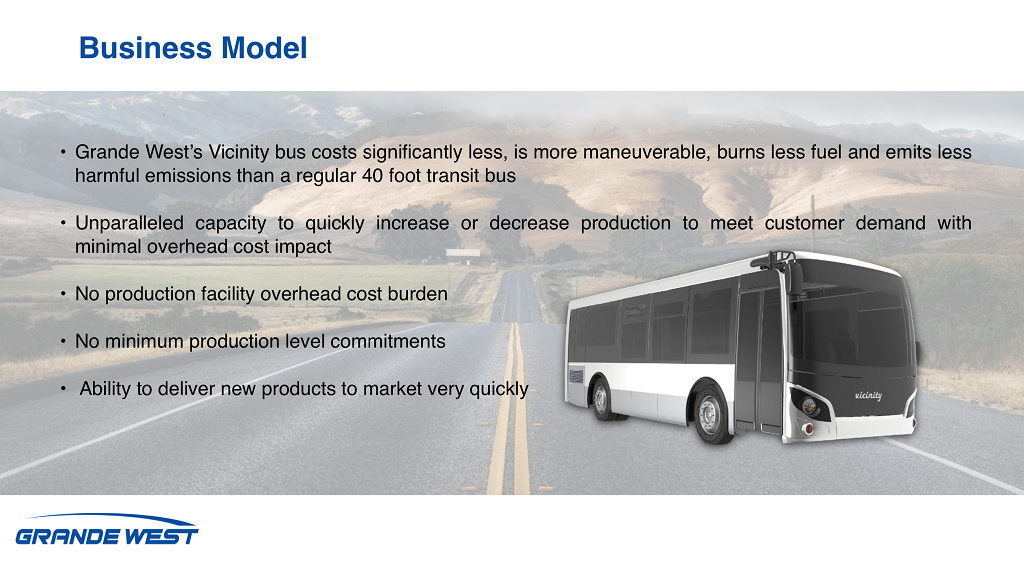
This flexible operational model allows the Company to limit overhead costs while focusing its efforts on advancing its IP development, bringing new products to market, and expanding its presence in existing and new markets. Recently, Grande West announced it will be launching an electric version of the Vicinity in 2020.
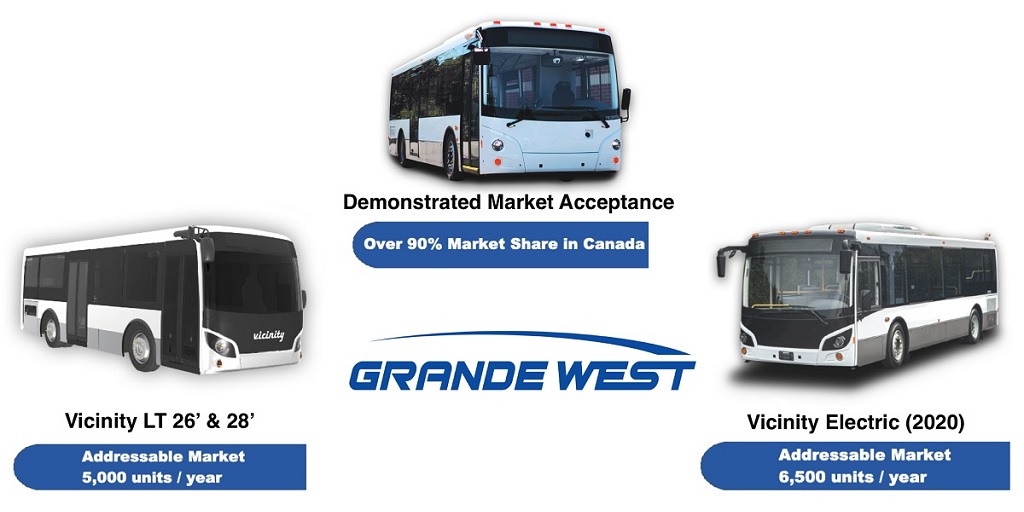
Past Performance and Future Initiatives
Grande West’s stock reached an all-time high in 2017, after annual sales jumped to CAD C$52 million, up from C$7 million the previous year. This rapid growth earned the Company a large following amongst both retail investors and institutional investors.
The Company’s most successful year was 2018 and also the first time it reached profitability. With C$65.9 million in annual sales, Grande West achieved a gross annual profit of C$8 million, C$2.8 million in EBITDA, and a net income of C$0.95 million. This same year, founder and CEO William Trainer stepped down from management but remained on the Board. However following his departure, after a less than stellar financial performance during which annual sales fell while expenses increased, Mr. Trainer resumed his role as CEO in 2019.
CHART 1: Grande West – Quarterly Revenue and EBITDA
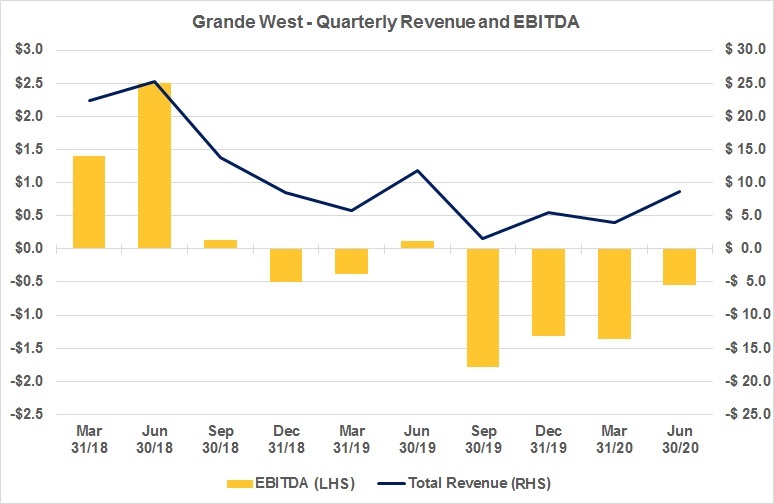
In a Zoom call, eResearch spoke with Mr. Trainer and VP of Corporate Development & Director John LaGourgue about the Company’s upcoming growth initiatives, including the launch of its new electric Vicinity model, and its plans to expand its presence in the U.S. market.
Grande West makes money by selling buses and additional parts and services. What kind of margins exists with this model?
WT: Our target is for about 20% gross margins on our buses, and from the additional parts and services we sell, which is mostly recurring revenue, the margins are about 35%-40%.
JL: Last quarter was a bit of a down quarter, we had lower margins than usual (6%) because we had lower sales volume and 8 buses were sold as a loss leader incentive for a new customer. In quarters where we have lower volume, the margins are impacted negatively because some of our fixed costs go into the Cost of Goods Sold. Higher volume generally improves all metrics.
What is the typical life span of one of your buses?
WT: It depends on the model and the amount of use – for our Heavy Duty Vicinity models, it’s a 12-year life span. Our new, lighter duty Vicinity LT model is a 5-7 year lifespan.
The materials used to manufacture the buses are sourced from overseas, and the products you sell are assembled in Canada. What are the advantages of operating in this way, both for you as a company, and for your customers?
WT: We consider ourselves contract manufacturers utilizing a global supply chain, which is one of our key advantages. Most of the moving pieces in the bus are North American – best of breed engine, transmission, etc.
As a contract manufacturer, we don’t have a $100 million factory that we need to maintain, so we don’t need to churn out a huge amount of buses per month just to cover the cost. This method of sourcing and assembly is very cost efficient, so we don’t have to sell a huge amount of buses to do well.
Additionally, the buses are all designed in Vancouver, so we own all the IP on our buses.
And finally, by using a global supply chain, we can pick the best in class parts so that our products are the best quality they can be. For example, to sell in the U.S. you need to pass a very rigorous set of tests in what’s called an Altoona test, and the buses we have sent down there to be tested in the U.S. always come out best in class.
Our unique business plan allows us to deliver a high-quality solution to our customers at the lowest cost.
Who are your typical customers?
JL: Our customers are transit authorities, airports, hotels, and airlines. A lot of our customers are repeat customers, for example, B.C. Transit.
There is a growing market, especially in the private sector, for shuttle buses that are used for short-haul journeys. We are entering this space with our new 28-foot Vicinity LT Electric Vehicle (“EV”) and gasoline models.
The Company has experienced some fluctuations in revenues in recent quarters – 2019 annual revenue was roughly $25 million, which was lower than in previous years. How do you account for this, and is there a plan to smooth these fluctuations out in the future?
JL: Sales cycles can be long or short, depending on the bid cycle and the need for the bus based on new or ongoing operations. Our typical delivery time for fulfillment would average six to twelve months after an order is accepted, and final specifications are agreed upon. On deliveries, our quarters will continue to be lumpy until the volume is increased, which we see starting to happen in late 2021 into 2022 as we expand our product line to include our lower-cost Vicinity LT models.
Are there any new customer bases you are targeting moving forward? What are you currently doing to attract new customers?
WT: Obviously the U.S. market is the largest market, and we would like to grow our sales there. In the U.S. the rules are different for public Federal Transit Administration (“FTA”) funded agencies: 70% of the parts have to be American-made and the bus has to be assembled in the U.S. But this means the selling price is higher, so it doesn’t really cut into our margins.
As for how we market ourselves in the U.S., we actually use a national distributor to sell for us, which has been working great for us.
JL: In terms of the overall market, we are seeing a lot of growth in demand for smaller to mid-sized models, which is what we specialize in. In terms of annual sales, it’s a strong market.
When customers order products, what is the average order size? Do you foresee order sizes growing as the Company expands?
WT: We are one of the few independent bus manufacturers out there, so the advantage is that we can take on orders of any size, whether large or small. We announced an order last year for 92 buses, but we can get orders up to 200. The great thing about our model is that we can be flexible. If we get an order for 1,000 buses, we would be able to take that on as well, without having to expand our facilities.
JL: The smaller transit agencies are where we get a lot of orders, that’s really our sweet spot. So to answer your questions directly, we see orders from as few as one or two buses, up into the hundred-plus orders (like our long term contract with BC Transit).
What are your thoughts on the electric vehicle revolution, and how does Grande West fit in?
WT: We have been getting a lot more inquiries about electric vehicles lately. Customers, especially the transit authorities, are seeking greener solutions, and going electric also helps them reduce their fuel costs.
As for where Grande West fits in, we did announce recently that we have been developing an electric model, which will be for sale in 2020, and we should have our first prototype/demo bus built in Q4. We’re really excited about this, we see a lot of opportunity in this market.
What goals do you have for the Company moving forward?
WT: We’ve got several that we have been focusing on, in order to increase value for our shareholders. One is lowering our overheads as we can keep growing. Another is product line expansion: bringing the Vicinity LT to market, and bringing our electric vehicle to market. And the third is market expansion – continuing to sell more buses in Canada and increasing our sales in the U.S.
JL: This is a huge period of growth for us, and we believe we are poised to do very well. We are looking to add to our product line-up with 40 foot and double-decker in the near future.
Has Covid-19 impacted your operations at all?
WT: We are lucky because a lot of our staff can work from home, and we have put tents up so people can keep working safely. We’ve kept the safety level very high. We have been keeping everything sanitized for the safety of our workers – everything gets wiped down twice a day. Orders are still coming in, and we’ve been able to make all our order deliveries without delay.
CHART 2: Grande West 1-Year Stock Chart
